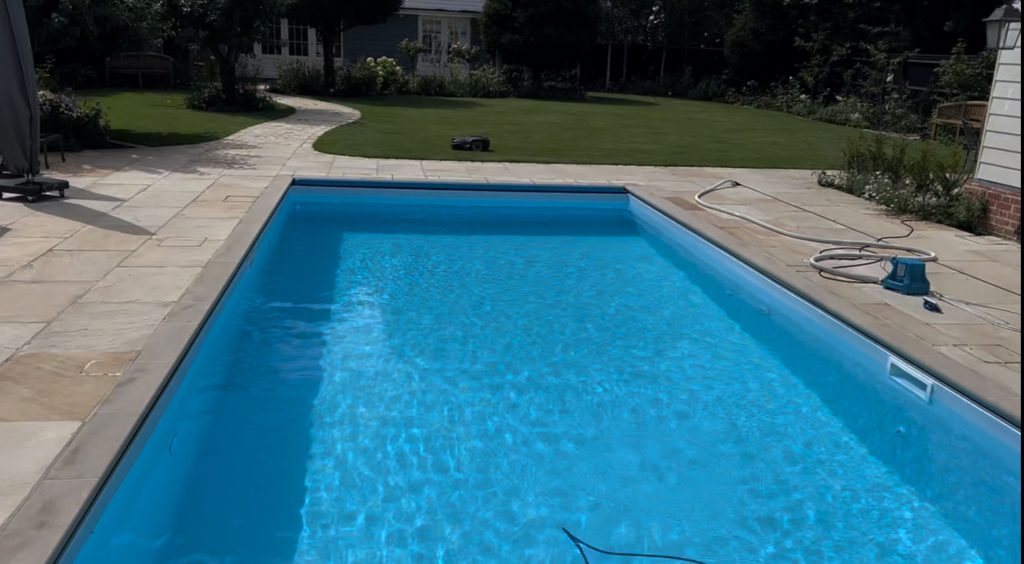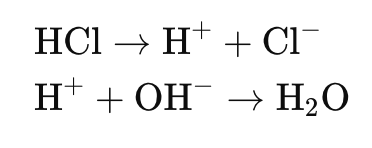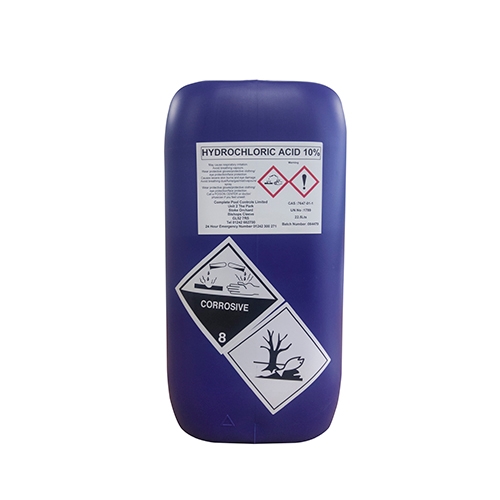Commercial grade hydrochloric acid is a common chemical used in swimming pool systems. Here we put to the test the Blue Horizons Hydrochloric acid 10% solution and see how well it works with a home pool system.
I have been using the Blue Horizons Hydrochloric Acid 10% 22.5Ltr for swimming pool maintenance over the past few months. This review is part of an ongoing evaluation of its performance and effectiveness.
Delivery & Initial Impressions
The product arrived from Alliance Online and was carried straight out of the delivery van. There is no packaging, which is good as far as I am concerned.
It’s always worth checking that there are no leaks or damage, which I always do and recommend as a matter of safety. The container is a blue-coloured, sturdy plastic and is easy to store.
Application and Usage
Following the manufacturer’s instructions, I connect the acid container to an auto-dosing machine. It’s used to balance the pool’s pH levels.
The lid of sealed with a strong piece of plastic that needs to be twisted off – this is not easy to do unless you are quite strong but it’s all for the reasons of safety to protect you. of course.
Following the removal of the security seal, the application process is thus straightforward, and the acid is sucked up into the system via a plastic tube. This then mixes in with the pool water as per the auto-dosing system.
Performance Evaluation
Since using Blue Horizons Hydrochloric Acid, I’ve noticed a significant improvement in the water’s clarity and stability of pH levels. The pool has remained free of algae, and the water feels cleaner which makes it more inviting.
In future I will be aiming to use and evaluate other products to find out whether or not this acid from Blue Horizons outperforms them.

Longevity and Value for Money
One 22.5Ltr container lasts approximately three months, and this can make for a cost-effective solution for pool maintenance. The pricing from Alliance is a bonus, as it seems relatively competitive.
It’s, of course, important to use quality chemicals in an investment as large as a swimming pool.
Safety and Precautions
Handling hydrochloric acid requires careful attention to safety. Like I do, you should always wear protective gloves and goggles and ensure the area is well-ventilated. The product’s clear instructions help maintain safe usage practices.
I can highly recommend the auto-dosing option, as it alleviates the need for pouring this dangerous acid which can easily corrode things if splashed onto it. For this type of setup all you need to do is remove the empty container and replace it with a new one.
Of course, there may be some residual acid in the old container and if you want to top up the new one, do so with the utmost of attention and care, wearing gloves and goggles for protection and also I recommend using a filter which will make the pouring process easier and safer.
Customer Support and Future Purchases
My interactions with the supplier’s customer support have been positive. They have provided prompt and helpful responses to my queries. Given the product’s performance to date, I intend to make repeat purchases and would recommend it to other pool owners.
To ensure a fair review over the lifetime of the pool, such a chemical requires a long-term evaluation and as such a high number of re-uses needs to be made in order to give a true indication of it’s effectiveness, as well as interactions with the supplier.
To date I am highly satisfied with Blue Horizons Hydrochloric Acid 10% 22.5Ltr and the service provided by the supplier, Alliance. It has proven to be an effective and reliable solution for maintaining the pool’s pH levels and overall water quality.
I look forward to continuing its use and updating my review with future observations.
How HCl Works in a Swimming Pool
Hydrochloric acid (HCl) is commonly used to regulate the pH levels in a swimming pool. Here’s a primer on how it works in case you’re interested:
pH Regulation with HCl
1. Understanding pH Levels:
- pH is a measure of how acidic or basic (alkaline) a solution is, on a scale from 0 to 14.
- A pH of 7 is neutral, below 7 is acidic, and above 7 is basic.
- For swimming pools, the ideal pH range is typically between 7.2 and 7.6. This range is optimal for swimmer comfort, equipment longevity, and effective chlorine sanitation.
2. Role of HCl:
- Hydrochloric acid is a strong acid that lowers the pH of water.
- When added to pool water, HCl dissociates into hydrogen ions (H⁺) and chloride ions (Cl⁻).
3. Chemical Reaction:
- The hydrogen ions (H⁺) from the HCl combine with the hydroxide ions (OH⁻) present in the water to form water (H₂O).
- This reduces the concentration of hydroxide ions, thereby lowering the pH of the water.
- The overall reaction can be summarised as follows:

4. pH Adjustment:
- If the pool water is too basic (high pH), adding HCl will bring the pH down to the desired level.
- The amount of HCl required depends on the pool’s volume and the current pH level.
- It’s crucial to add the acid gradually and in small amounts, testing the pH after each addition to avoid over-acidification.
5. Importance of pH Balance:
- Swimmer Comfort: Proper pH levels prevent eye and skin irritation.
- Chlorine Efficiency: Chlorine is more effective at killing bacteria and algae within the ideal pH range.
- Equipment Protection: Balanced pH prevents corrosion of pool equipment and surfaces, extending their lifespan.
6. Practical Steps for Using HCl in a Pool (Without auto-doser)
- Testing: Regularly test the pool water’s pH using a reliable test kit.
- Calculating Dosage: Determine the required amount of HCl based on the pool’s volume and current pH level.
- Adding HCl: Slowly pour the acid into the pool, preferably in front of a return jet to ensure even distribution.
- Safety Precautions: Wear protective gear (gloves, goggles) and ensure good ventilation when handling HCl.
7. Monitoring and Maintenance:
- Continuously monitor the pH levels, especially after heavy pool usage or rain, as these can affect the pH.
- Adjust the HCl dosage as needed to maintain the optimal pH range.
By understanding and following these steps, you can effectively use hydrochloric acid to maintain the proper pH balance in your swimming pool, ensuring a safe and pleasant swimming environment.
